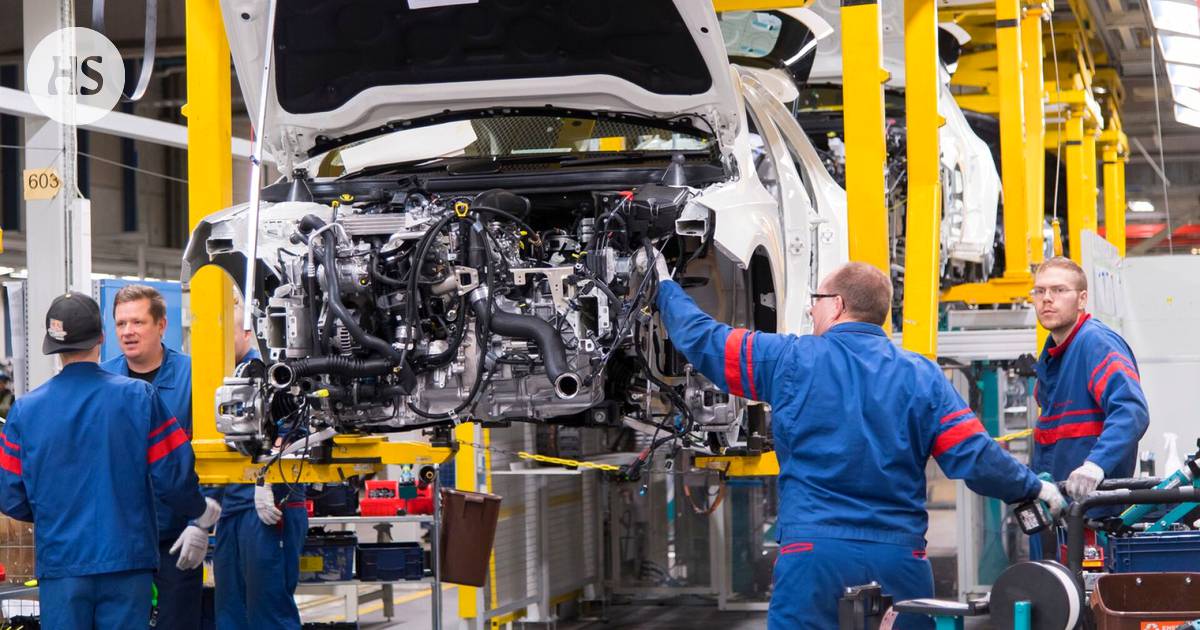The European economy has been surprisingly durable, says credit rating agency S&P Global Ratings. There has been enough work, which has encouraged spending. Industry has also done well. In 2023, the outlook becomes gloomy.
3.12. 20:20
London
EuroArea will probably dive into recession next year, but at least the starting positions are good.
Industrial production and the employment situation have been exceptionally strong. The general view is that economic numbers are still much stronger than sentiment.
“We’ve been watching when the recession starts, but the European economy has been very resilient so far,” said the economist responsible for Europe at S&P Global Ratings Marion Amiot to reporters in the City of London on Thursday.
A credit rating agency according to the EU’s industrial production has remained at record high levels in the third quarter.
It has been tough this year, especially in the automotive and pharmaceutical industries. Production in the automotive industry has increased by as much as eight percent compared to the previous quarter, and in the pharmaceutical industry by six percent.
“Even though new orders are decreasing, existing orders keep production going, which will have a positive effect on the European economy well into next year,” S&P’s latest prognosis states.
However, industries that need a lot of energy have not been able to keep up with the growth. These include the paper, metal and chemical industries, as well as energy refineries.
Production in energy-intensive sectors fell by more than four percent in the third quarter. The reason was, among other things, the increase in gas prices.
Economy has also fueled surprisingly robust consumer demand this year, even though prices have risen rapidly.
The tourism, hotel and restaurant industries have especially benefited from the release of pent-up consumerism during the Corona period.
Spending would not be successful without a good employment situation. Companies have hired more people, and there are enough jobs for those who want to work.
“At our house [Euroopassa] has a very strong labor market. It maintains the income level of households, even though consumption has started to decrease,” said Amiot.
Part Central European countries have also received a surprising boost to their economy from refugees from Ukraine and neighboring regions.
“If you look at the German labor market…about a million new refugees have entered, contributing to the German economy.”
According to S&P’s economic forecast, Germany’s population rose to more than 84 million in the third quarter of this year. The increase in the population means an annual increase of no less than 1.2 percent.
However, the situation in the European labor market is also starting to deteriorate little by little.
Before long, it will be reflected in the housing market as well. Housing sales slow down when consumers avoid long-term investments.
European moreover, the situation of the world economy has remained “surprisingly good” this year, when you take into account the geopolitical uncertainty and the interest rate hikes by the central banks.
However, there is a significant slowdown ahead. The key is what happens to the labor market.
“When we get to the side of next year, the visibility will improve – – Considering the events and shocks of the current year, it is still really significant how well the ratings have held”, said S&P Global Ratings Paul Watterswhich leads the analysis of credit ratings of European communities.
Euro area will sink into recession next year with a 70 percent probability. Just three months ago, the estimate for the probability of a recession was only 47 percent.
The numbers are based on the latest from S&P Global Ratings to the forecast.
Although 2023 is turning out to be more gloomy than 2022, the European economy also has ups and downs: public investments and wage increases support demand.
S&P predicts that wages will continue to rise next year. For example, the German metal industry has already agreed on wage increases of 5.2 percent from next June until May 2024.
Public investments in the euro area will rise to 3.1 percent of GDP this year. In 2018, the corresponding figure was 2.7 percent.
Europe’s green and digital transition is also to be boosted by more than two thousand billion euros About the Next Generation EU recovery plan.
Economy the risks are familiar: the prolongation of Russia’s war of aggression, the continuation of the energy crisis and the worsening of inflation due to wage increases.
“The rise of geopolitics and nationalism is not over, but will continue into the future. The era of normal macroeconomics is clearly over,” S&P’s macroeconomic forecast states.
At the same time, companies’ room for maneuver is getting even tighter, which eats into investments.
Banks have already tightened lending conditions for both companies and households. The price of loan money for mortgage borrowers and small and medium-sized companies is already the most expensive in nominal terms in eight years, says S&P’s forecast.
“We anticipate that the next six months will be even more challenging from a credit perspective,” Watters told reporters.
S&P according to the forecast, the GDP of the euro area will shrink by about one percentage point during the next two quarters.
It will not be known until 2023 how much interest rates, i.e. the price of money, must be raised in order to bring inflation under control. The challenge now lies in when is the right time to stop raising interest rates.
It is essential to coordinate monetary policy and fiscal policy. In Europe, we are used to the fact that the state always pays in times of need. After the pandemic and as the war continues, few countries can afford this anymore.
#economy #Eurozone #rallied #worries #Germany #received #aid #refugees









